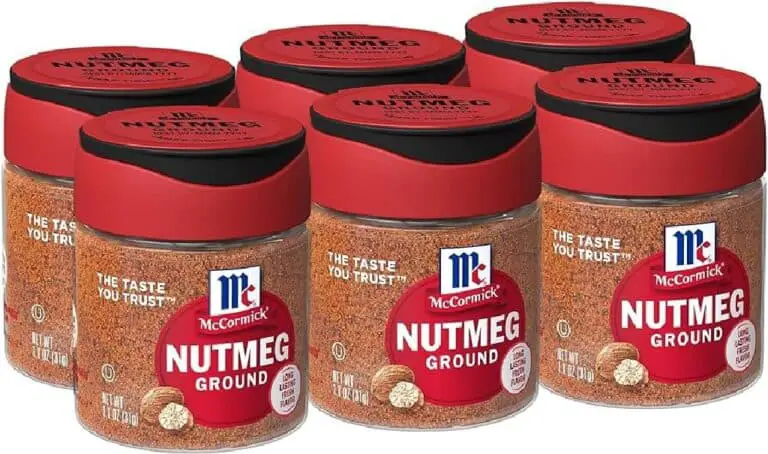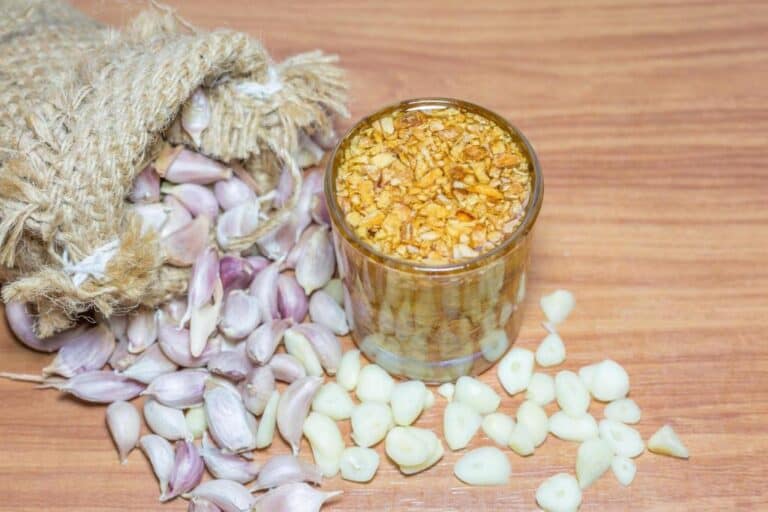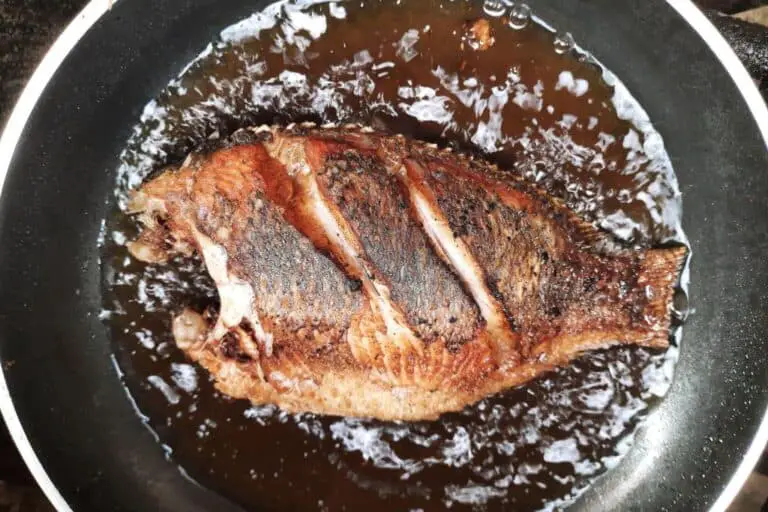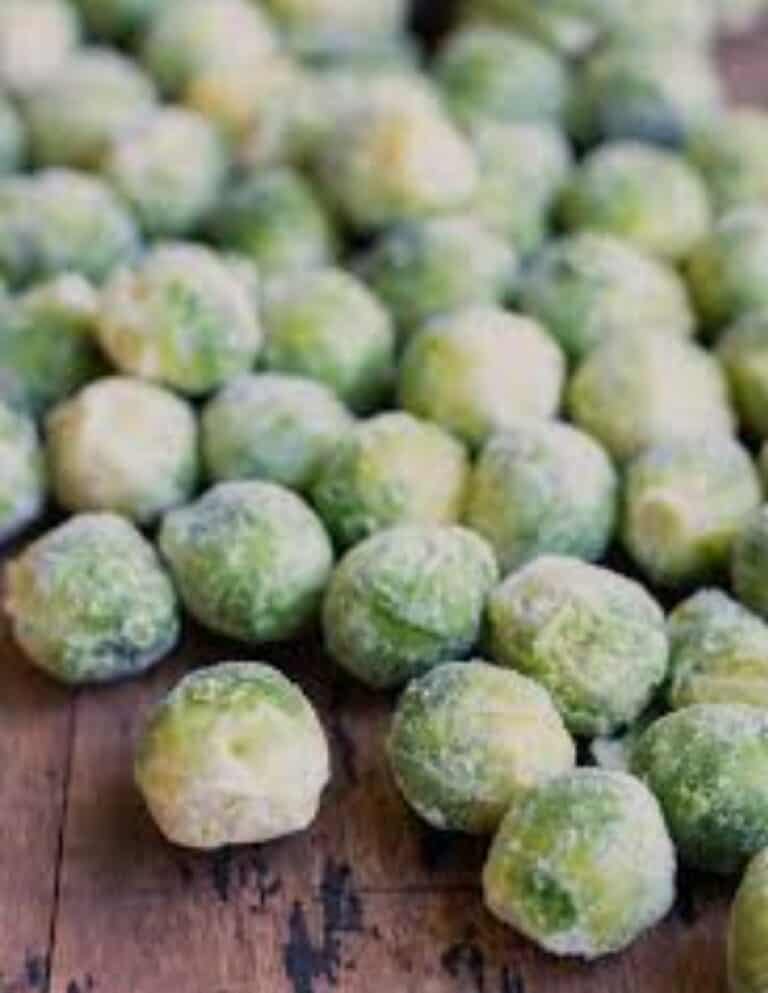Melted Plastic in the Microwave – Can I Still Eat Food? (Is It Safe?)
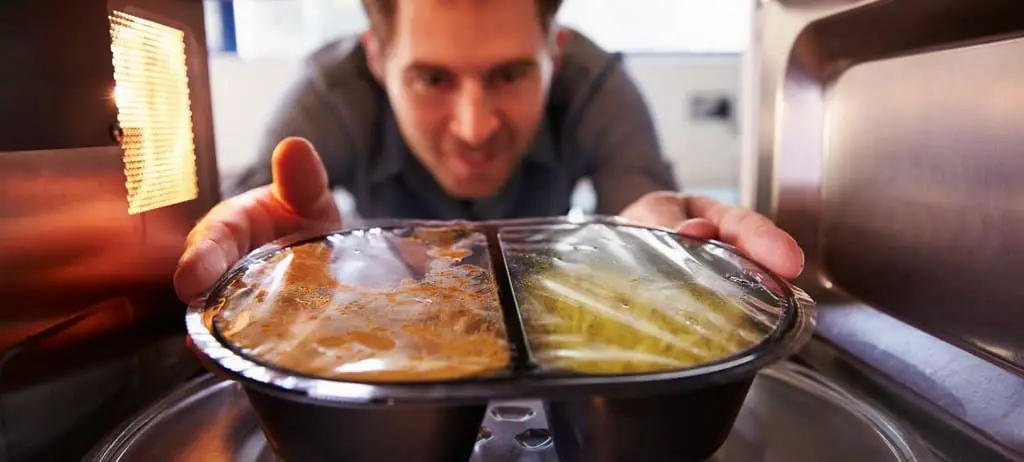
Many of us have experienced the frustration of melted plastic in the microwave. It’s a mess, and it can be hard to clean up.
But what about the safety of the food we’re eating? Is it still safe to eat food that has been heated in a microwave with melted plastic?
The good news is that, in most cases, the food will be just fine. However, there are a few things you should keep in mind. First, check the food for any signs of burning or charring. If it looks okay, go ahead and give it a smell test.
In this article, we’ll explore the safety issue of melted plastic in the microwave. In addition to that, you get tips on how to clean your microwave should that incident happen.
Melted Plastic Container in the Microwave – Can I Still Eat Food?
If you’ve ever accidentally left a plastic container in the microwave, you know the feeling of horror when you see it melt onto your once-pristine baking sheet. But don’t panic!
Even though it’s not a good idea to eat food that has touched melted plastic, there are a few things you can do to save it.
First, take a close look at the plastic and determine whether or not it’s actually melted onto the food.
If it’s just sitting on top of the food, you can probably scrape it off and continue cooking as usual. However, if the plastic is sticking to the food or has leaked into it, it’s best to discard the entire dish.
Next, check for any signs of burns on the food. If there are any, discard the food and wash your hands thoroughly before touching anything else.
Finally, if you want to remove the plastic from your baking sheet, wash it with soap and water.
Easy Step to Remove Food from Melted Plastic in Microwave
If you’ve ever accidentally melted plastic in the microwave, you know it can be a real pain to clean up.
Fortunately, there are a few simple steps you can take to remove the food from the melted plastic and get your microwave looking as good as new.
- First thing to do is unplug the microwave and let it cool down.
- Once it’s cooled, remove any loose food bits from the inside of the microwave with a damp paper towel.
- Next, fill a bowl with warm soapy water and dip a sponge or cloth into it.
- Gently scrub at the stained area until the plastic stain is gone.
- Rinse the stained area with clean water. After cleaning, blot it off with a towel.
- If the stain is particularly stubborn, you may need to repeat these steps a few times.
Does Melted Plastic Release Toxins?
When plastic is heated, it can release a number of toxic chemicals into the air. These chemicals can be harmful to both humans and the environment.
There are a few different types of plastic, each with their own melting point. When plastic is heated above its melting point, it can release toxins into the air.
The most common type of plastic is polyethylene terephthalate (PET), which has a melting point of around 260 degrees Fahrenheit.
Some studies have found that when PET is heated to its melting point, it can release a number of harmful chemicals into the air. These chemicals include antimony, cadmium, lead, and other heavy metals. Additionally, some of these chemicals can cause cancer in animals.
While there is still more research to be done on the topic, it seems that melted plastic can release toxins into the air.
What Should I Do if I Accidentally Burn Plastic in the Microwave?
If you’ve ever had the unfortunate experience of accidentally burning plastic in your microwave, you know it’s not a pleasant experience. The smell of burnt plastic can be overwhelming, and the cleanup can be a real pain.
But don’t worry, we’re here to help. Here are a few tips on how to deal with burned plastic in your microwave:
- First, you will want to unplug the microwave and then let it cool down.
- Try to ventilate the area as much as possible. Open up all the doors and windows and turn on any fans or air purifiers you have.
- Once the area is well-ventilated, start by removing any large pieces of burned plastic from the microwave. Use a spoon or spatula to carefully scoop them out and dispose of them in a sealed bag.
- Next, use a damp cloth or sponge to wipe down the inside of the microwave. Make sure to wipe all the nooks and crannies that are hard to reach. Use a paper towel or rag to get into the cracks and crevices.
- Make sure your inner microwave is clean from melted plastic or burns residues. Once it is clean, you can begin to wipe out the inside of the microwave with a damp cloth.
- Turn your attention back to the interior of your microwave. Take a damp cloth or sponge and wipe down the interior of your microwave. Once again, make sure to wipe all the nooks and crannies that are hard to reach. Take care not to get the inside of your microwave too wet , though.
- If there is any residue left behind, you can try scrubbing it with a mild detergent.
- You may also need to replace the filter on your microwave if it becomes damaged by the fire.
- Once you have finished cleaning your microwave, wipe down the outside of it with a damp cloth or sponge. Make sure to get all the door handles and the outer body of the microwave.
- Once again, use a damp cloth or sponge to wipe down the outside of your microwave. Make sure to get all the door handles and the outer body of the microwave.
- Congratulations, you have just cleaned your microwave!
Can You Still Cook in Microwaves After Melted Plastic?
If you’ve ever melted plastic in the microwave, you know it’s not a pretty sight. But is it safe to use your microwave after this happens?
The short answer is yes, you can usually continue using your microwave after melting plastic. However, there are a few things you should keep in mind to make it safe.
First, make sure to clean up the mess as soon as possible. Melted plastic can release harmful chemicals into the air, so it’s important to get rid of it quickly.
Second, check the condition of your microwave. If the inside is significantly damaged, it’s probably best to replace it. Otherwise, just be sure to give it a good cleaning before using it again.
Finally, be more careful in the future! Microwaves can get hot enough to melt plastic, so always use caution when cooking with them.
Is It Safe To Use Microwave After Burning Plastic
When it comes to heating food in the microwave, many people are asking whether it is safe to use a microwave after burning plastic.
Unfortunately, this happens a lot because plastic containers and wraps don’t always say that they can be put in the microwave.
| The main worry about putting food in the microwave after burning plastic is that toxic fumes could get into the food. This can happen when plastics melt, like when Styrofoam or vinyl-coated plates and containers melt. |
There are ways to reduce any potential risk from using microwaves after burning plastic.
- You might want to wipe out your microwave with a damp cloth before using it again to get rid of any residue on the plastic that could make your food unsafe to eat.
- To reduce these risks, make sure that any containers used in the microwave are labeled as “microwave safe” and avoid heating non-edible items like wax paper or aluminum foil.
- You should avoid using any pieces of burned or charred plastic when reheating your food in the future.
By doing these things, you can help make sure that no harmful chemicals get into your food when you reheat it in the microwave.
Plastic Heating and Leaching
When it comes to plastic, leaching can occur at high temperatures. The chemicals in plastic can start to leach out of the material and into food or drinks. This can happen when plastics are heated up, such as during cooking or microwaving.
Leaching can also occur when plastics are left in the sun or in hot cars. The heat can cause the chemicals in the plastic to break down and leach into whatever is touching it. This is why it’s important to avoid using plastics that have been exposed to heat.
There are some types of plastic that are more likely to leach than others. PVC and polystyrene are two of the most common types of plastic that leach chemicals. If you’re concerned about leaching, avoid using these types of plastics.
At what temperature does plastic leach? Some say that it begins to leach at around 80 degrees Fahrenheit, while others claim that it can leach at lower temperatures. However, the consensus seems to be that plastic starts to leach chemicals into food and drinks when it is heated above 135 degrees Fahrenheit.
When plastic is heated, chemicals such as bisphenol A (BPA) and phthalates are released into food and drinks. These chemicals can be bad for our health, making us more likely to get cancer or have trouble getting pregnant. Additionally, they can disrupt our hormones and cause developmental problems in infants and children.
Microwave-Safe Plastic
When it comes to microwaving food, there are a few things to consider. One of the most important things is what type of container you’re using. Some plastics can release harmful chemicals into food when heated, so it’s important to use microwave-safe plastic.
Microwave-friendly plastic containers are usually labeled as such, so be sure to check for this before using any plastic container in the microwave.
Microwave-safe plastic is made of a material that doesn’t break down or leach chemicals into food when heated. This makes it safe to use in the microwave.
Most plastics are not microwave-friendly. Certain types of plastic can only be safely heated in the microwave. These include plastics labeled with the numbers 1, 2, 4, and 5. Plastics labeled with the number 3 should not be microwaved.
| If you’re not sure if a container is microwave-safe, it’s best to err on the side of caution and avoid microwaving it. |
Melted Plastic in the Microwave – Can I Still Eat Food? (Conclusions)
In conclusion, it is not recommended to melt plastic in the microwave. Not only can it release harmful chemicals into your food, but it can also be a fire hazard.
But there are certain conditions under which the food is still safe to eat. Make sure the food is not in contact with melted plastic. If this is the case, be sure to throw out the food and clean the microwave immediately.
If there is any melted plastic on the food itself, it’s best to err on the side of caution and throw it out. When plastic melts, it can release chemicals into your food that are bad for you to eat.
So, next time you accidentally leave a plastic container in the microwave or have melted plastic in oven, don’t panic! As long as there is no sign of burning or charring on the food, and melted plastic got into the food, it should be safe to eat.


